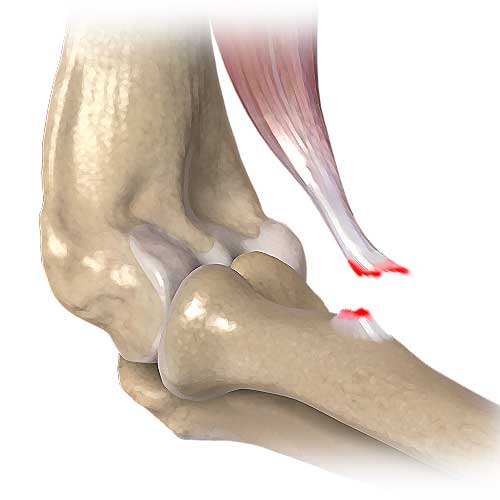
A distal biceps tendon tear refers to a tear or rupture of the tendon that attaches the biceps muscle to the forearm bone (radius) near the elbow joint. The biceps muscle, located in the front of the upper arm, plays a crucial role in forearm flexion and supination (turning the palm upward).
Distal biceps tendon tears typically occur as a result of a forceful contraction of the biceps muscle or a sudden, excessive load placed on the tendon. This can happen during activities that involve heavy lifting, rapid forceful movements, or direct trauma to the forearm. Men between the ages of 30 and 50 are more commonly affected by distal biceps tendon tears.
The tear can be classified as either partial or complete:
Partial Tear: A partial tear refers to damage to a portion of the tendon. This may cause pain, weakness, and limited range of motion in the affected arm. However, the tendon is still partially intact.
Complete Tear: A complete tear indicates a full rupture of the tendon, where the tendon is completely separated from its attachment to the radius bone. This type of tear typically causes sudden, sharp pain in the front of the elbow and forearm, bruising, swelling, and a visible deformity, often described as a “Popeye deformity” due to the retracted biceps muscle.
Biceps Tendon Tear Treatment

Biceps Tendon
The distal biceps tendon attached to your radial bone at the elbow and is crucial for elbow bending and urning the palm upward.

Biceps Tendon Tear
Tearing of the biceps tendon can lead to bruising, swelling and loss of elbow strength.

Biceps Tendon Repair
Repair of a biceps tendon tear involves re-attaching the tendon back to its original footprint using a specialised titanium button.
For Patients
If you have injured your elbow, it is important to get your elbow evaluated and to perform appropriate diagnostic tests. Dr. Arthur Turow will provide expert assessment of your injury and recommend a tailored treatment for your specific injury to help you achieve the best outcome.
